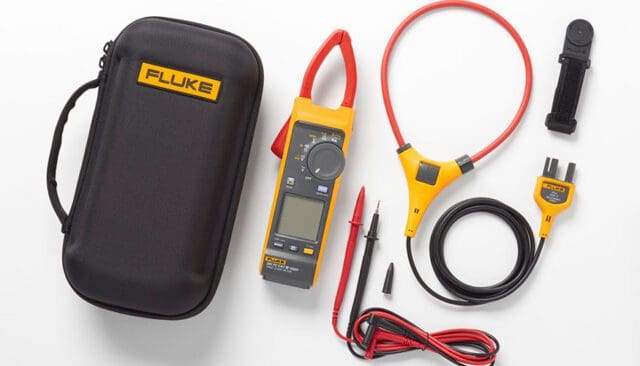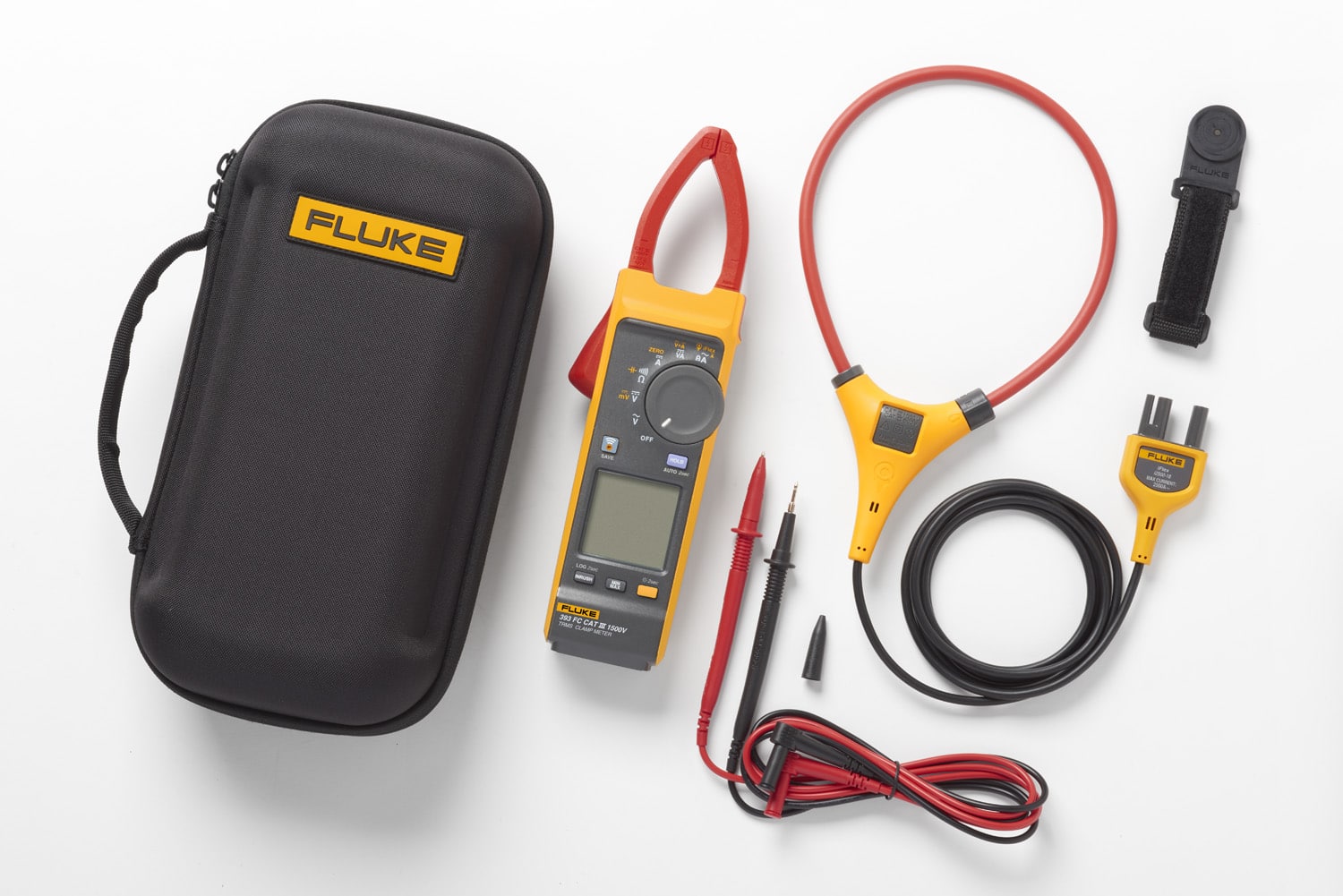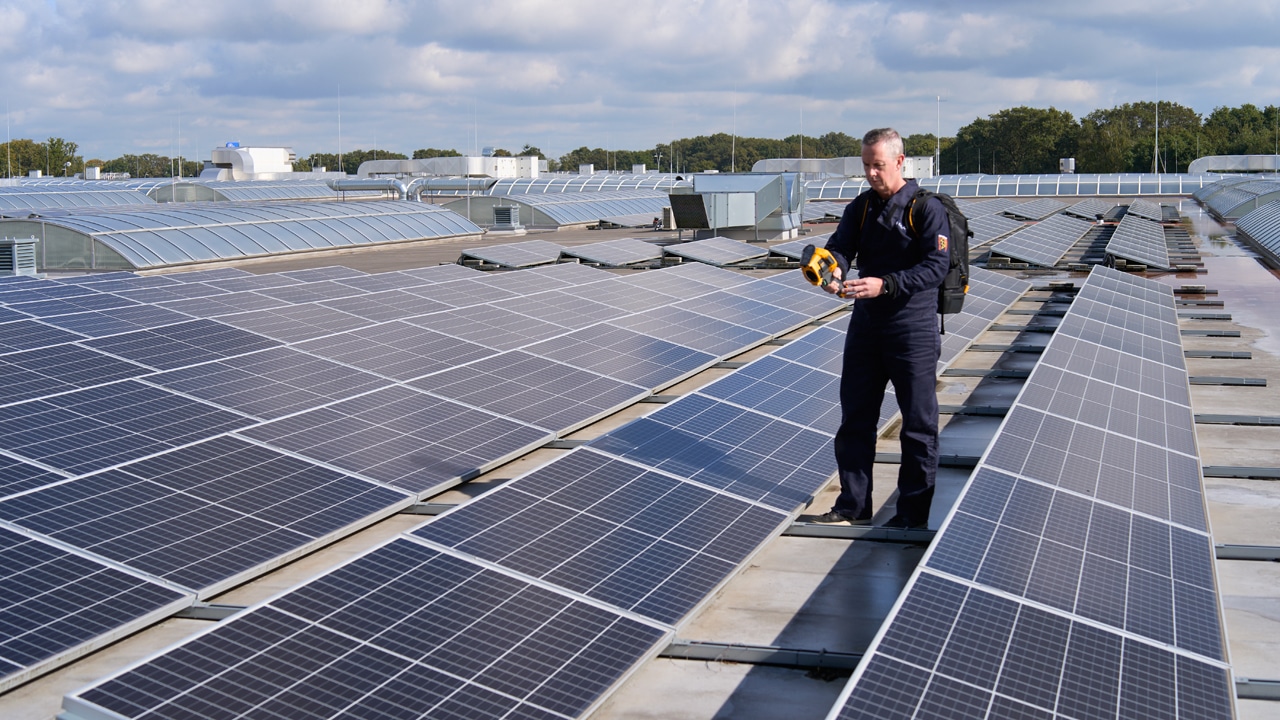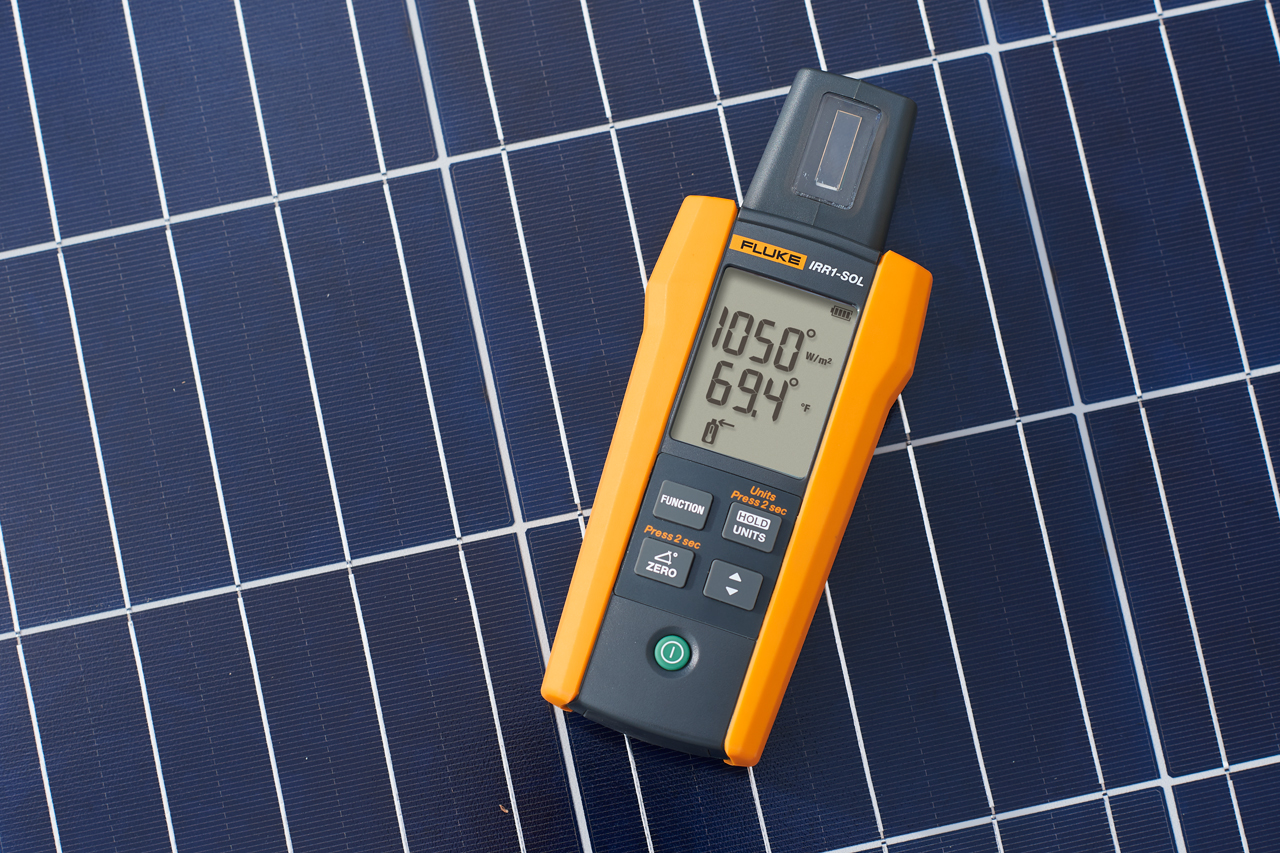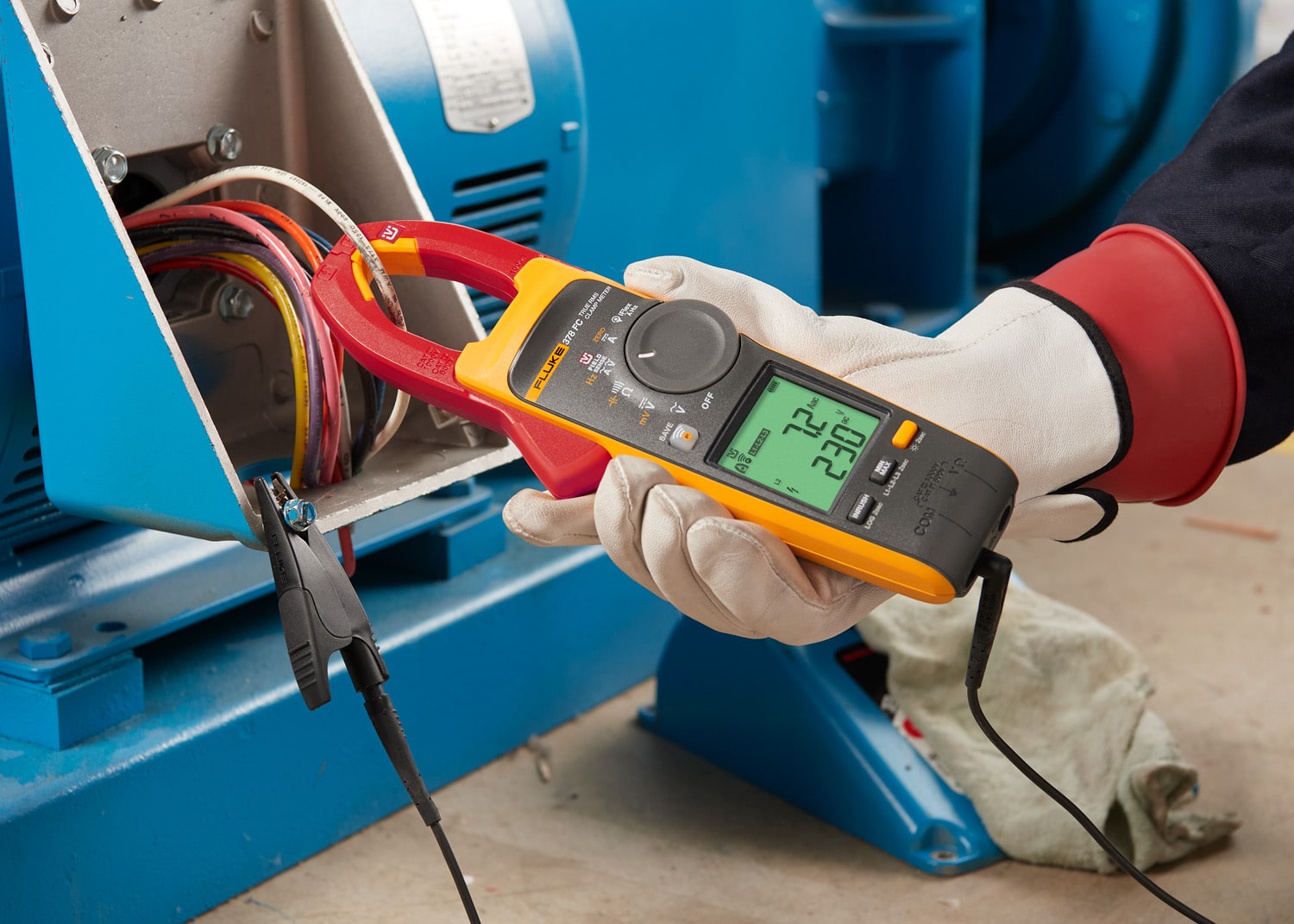Fluke's new 393 FC Clamp Meter is the world's first portable instrument that allows technicians to safely measure up to 1500V in DC environments such as solar farms.
Fluke is experiencing in Spain an increase in demand for high-precision portable devices capable of measuring photovoltaic systems.
Solar energy is growing rapidly in Spain, whose installed solar capacity exceeded 11,5 GW in 2019-2020 according to Statista. The country ranked fifth among those adding the most solar capacity during that period and is poised to exceed 62 GW by 2050.
This dynamic growth is creating an increasing demand for technicians who know how to troubleshoot photovoltaic systems efficiently and effectively. Clamp meters are often used in the installation and commissioning phase, as well as for maintenance and troubleshooting.
The new Fluke 393 FC Clamp Meter is the world's only CAT III 1500 V true-rms clamp meter, enabling technicians to take measurements in DC environments such as solar farms. This instrument has been specially developed to check and measure photovoltaic applications and for this it incorporates functions such as:
- IP54 protection, ideal for outdoor work such as solar panels and wind systems
- DC measurements with readings expressed in kVA
- An audible polarity indicator to prevent accidental wiring errors
- Visual Continuity feature displays a bright green light on the screen to help technicians work in dark and noisy environments
- Recording and reporting of test results via the software FlukeConnect
Hans-Dieter Schuessele, Fluke Applications and Technology Expert EMEA region, points out: "The transition towards the use of renewable energies is accelerating, and it is essential that installers and maintenance personnel have the appropriate tools, not only so that solar parks can be connected to the electricity grid quickly but also so that keep running at peak performance. As the world's first solar clamp meter to offer 1500V CAT III rating, the Fluke 393 FC enables technicians to work safely and ensures that the use of solar energy has a bright future.”
Distributed solar systems and loads are becoming larger and more complex, making technician safety even more important. For technicians it is essential to know the level of protection of an instrument and how to use it in maintenance and troubleshooting. According to Fluke, troubleshooting in a PV system typically focuses on four parts of the system: PV panels, load, inverter, and combiner boxes.
1. Solving problems in photovoltaic panels
The technician should first check the output of the entire system on the meter or inverter. Before starting to solve the problem, he should also check and record the input voltage on the inverter and the current level in the solar panel group.
The combiner box can be an ideal place to troubleshoot the system, since it is connected to each wire coming from the modules. Each module may have a fuse that should be checked with the Fluke 393 FC.
Wiring problems and loose connections can cause a module to generate too low a voltage. This can be measured with the Fluke 393 FC to check wiring connections in junction boxes.
The Fluke 393 FC provides an audible warning of polarity when checking Voc. If the polarity is reversed, it may mean that there are other circuits in the combiner box that are unintentionally connected in series, and therefore there are voltages higher than the maximum input voltage of the inverter.
2. Troubleshooting in photovoltaic charges
Start by checking the load switches, fuses, and circuit breakers with the Fluke 393 FC to see if the voltage is correct at the load connection. Then check the fuses and circuit breakers. Locate and replace blown fuses or tripped circuit breakers. If the load is a motor, an internal circuit breaker may have tripped and there is an open winding in the motor. To test, connect another load and see if it works correctly.
As with any electrical system, check for broken wires and loose connections. Clean dirty connections and replace all bad wiring. After power is disconnected, check and repair any ground faults. If a fuse blows again or a circuit breaker trips, a short circuit will occur that must be located and repaired.
If the load is still not working correctly, use the Fluke 393 FC to check the system voltage at the connection to the load. The wire size may be too small and may need to be increased. In such a case it will manifest itself as a low voltage in the load; to solve it, reduce the load on the circuit or install a larger cable.
3. Troubleshooting in photovoltaic inverters
The inverter converts DC from the photovoltaic system to AC that can be used in buildings. For troubleshooting on the AC side, use the Fluke 393 FC to check the voltage and current levels at the output of the inverter. Many of these systems incorporate a display that indicates the current performance of the inverter and the system. Since the Fluke 393 FC provides true-rms reading, you can use voltage and current to measure and record kilowatt (kW) output power. If possible, use the inverter display to show the total energy of the stream in kilowatt hours (kWh) and compare it to the value recorded during the last inspection. When troubleshooting the DC side, use the Fluke 393 FC to check the DC power and save the reading to the Fluke Connect™ app on your phone.
If the inverter is not supplying the correct power, there may be a blown fuse, tripped circuit breaker, or broken wires; all of this can be easily checked with the Fluke 393 FC.
4. Troubleshooting combiner boxes
When solving problems in combiner boxes, current measurements and calculations are essential to know if the groups of photovoltaic panels are working correctly. Measuring current on each group of panels or combining current measurements will help determine if a module is malfunctioning.
The slimmer jaw on the Fluke 393 FC Current Clamp ensures multiple leads are used in the jaw for combined current measurements, even in tight or crowded spaces like inverter or combiner boxes.
For more information on the 393 FC CAT III 1500 V True-rms Clamp Meter with iFlex, visit https://www.fluke.com/es-es/producto/comprobacion-electrica/pinzas-amperimetricas/393-fc


